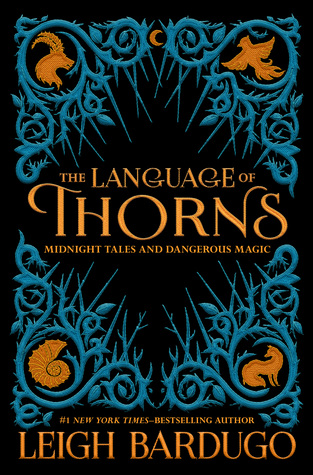Review: “The Language of Thorns” – A New Brand of Fairytale

Emelie Mano ’20 / Emertainment Monthly Staff Writer
Leigh Bardugo, famous for both her Grisha Trilogy and Six of Crows Duology, has just released her latest novel, The Language of Thorns: Midnight Tales and Dangerous Magic. Still set in her Grisha Universe, The Language of Thorns consists of a group of wonderfully written fairytales accompanied by beautifully intricate illustrations by Sara Kipin. Consisting of six short stories, Bardugo incorporates themes and patterns of some classic stories such as Beauty and the Beast, The Little Mermaid, and Hansel and Gretel.

What makes her stories particularly unique is not their deliciously dark and dreamlike qualities, but how Bardugo does not follow the traditional approach of producing a clear, happy ending. She does not follow the traditional Disney tropes. Instead, each of her stories are the epitome of brutal honesty and distorted reality.
Tales included in the collection, such as “The Too-Clever Fox” and “The Witch of Duva,” incorporate disturbing plot twists that readers will never expect. Both these stories highlight the stereotypes of villainy while simultaneously going against stereotypes. Additionally, through “Ayama and the Thorn Wood” and “Little Knife,” Bardugo gives readers modern, non-tradtitonal endings. She targets those who are less intrigued by the idea that the beautiful princess gets the perfect outcome or that the handsome prince will always save the day.
In “Ayama and the Thorn Wood,” young girls require cunningness and bravery to survive, not their looks. The princes, on the other hand, are either monsters or cowards. In “Little Knife,” Bardugo offers a delightfully feminist perspective. It begins with the familiar elements of traditional fairytales such as a competition for the hand of a beautiful maiden and a lower class suitor challenging the handsome prince. Bardugo transforms these tired tropes into a story that celebrates female agency and identity.

Likewise, each of the tales are set in the different areas of the Grisha Universe. Fans of Bardugo’s previous books will take pleasure in recognizing the familiar settings seen in her previous novels such as Ravka and the nation of Kerch. They will find themselves entangled into the lives of the Fjerdan mermaids within “When Water Sang Fire,” which provides an otherworldly anti-hero origin story for The Little Mermaid. Likewise, “The Soldier Prince” mentions the city of Ketterdam, appealing to readers who are fans of Bardugo’s Six of Crows series while describing an alternate history of The Nutcracker.
Those who have not experienced Bardugo’s work are not necessarily required to read her previous novels to understand the stories. Each tale is as mesmerizing as it is enjoyable. Combined with Sara Kipin’s illustrations, The Language of Thorns achieves a storybook quality. Every illustration draws out more curious details that fill up the border of each page as the story progresses. When the story is complete, readers are given a full double-spread of artwork to accompany the tale.
Readers do not have to be a fan of young-adult fiction to appreciate the delicacy and enjoyment of a collection of fairytales, especially presented in such a magical universe as the one Bardugo provides. Each tale has its own unique ability to stand alone while also inducing a craving to read more. All of the stories can easily be read in a few sittings. The magic of these short stories makes them best appreciated during the midnight hour to experience the full effect of their ambiance, making The Language of Thorns a perfect eerie read for October.